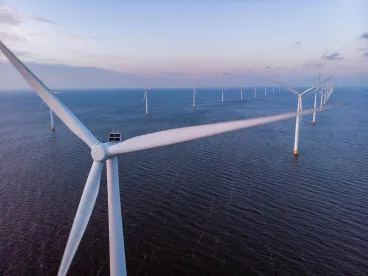With the recent Gulf Auction falling short of expectations and projects on the East Coast faltering, many have adopted a bearish stance on the U.S. offshore wind sector. However, California recently passed two new bills to support the state’s burgeoning offshore wind industry: the Offshore Wind Advancement Act (AB 3) and the California Offshore Wind Expediting Act (SB 286). These bills, which take effect January 1, 2024, have the potential to significantly impact offshore wind development in California.
Key Provisions of the California Offshore Wind Advancement Act
AB 3 mandates the California Energy Commission:
- develop the second phase of its offshore wind strategic plan and a strategy for seaport readiness by December 31, 2026;[1] and
- assess the feasibility of handling more than 50% of offshore wind project assembly and manufacturing in-state.
Key Provisions of the Offshore Wind Expediting Act
SB 286 aims to significantly reduce the offshore wind permitting process – by months or years – and streamline regulatory review by:
- allowing the California Coastal Commission to process a consolidated permit for new coastal developments “associated with, appurtenant to, or necessary for” the construction and operation of offshore wind energy projects and transmission facilities needed for those projects, provided that public participation is not substantially impaired by the review of the consolidated coastal development permit;[2] and
- designating the State Lands Commission as lead agency under the California Environmental Quality Act (CEQA) and requiring it and the California Coastal Commission to coordinate with other governmental entities to encourage and facilitate joint environmental review documents under CEQA and the federal National Environmental Policy Act (NEPA).
The bill also seeks to offer environmental protections by:
- creating the California Offshore Wind Energy Fisheries Working Group, which mandates that state agencies and stakeholders develop a statewide strategy to avoid impacts to ocean fisheries and mitigate unavoidable impacts from offshore wind development; and
- forming an Offshore Wind Energy Resiliency Fund to be funded with revenue generated from offshore wind energy project leases and used for compensatory mitigation of unavoidable ocean impacts.
Stay tuned for additional updates on the California offshore wind market.
FOOTNOTES
[1] The Commission launched the first phase of its strategic plan for offshore wind development on June 30, 2023.
[2] Under existing law, permits for development within the coastal zone are issued by the California Coastal Commission or the local cities or counties with certified local coastal programs. Some projects that cross jurisdictional boundaries, as offshore wind facilities would, require multiple coastal development permits from different authorities, which can lead to a lengthy appeals process.
Joshua Sturtevant, law clerk in the firm’s New York office, also contributed to this article.




 />i
/>i

